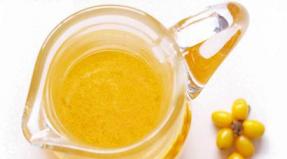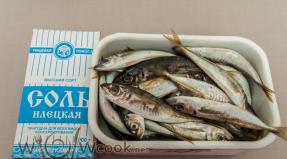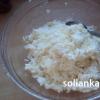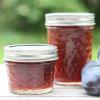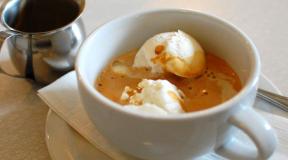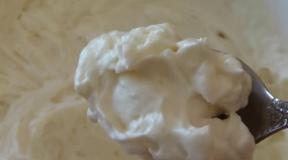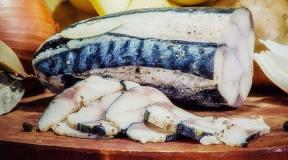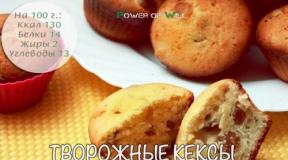Chocolate paste. For cooking, you can use either one type or a mixture of several nut components, as in this recipe based on condensed milk
There is always a place for a holiday in life. And a slice of white bread or a regular cracker can easily be turned into an appetizing dessert with the help of chocolate-nut spread. Real and delicious chocolate spreads are made exclusively from the most natural products, the freshest milk, quality cocoa and hazelnuts. But is it really so?
Spreading paste can be a la milk or dark chocolate, thick and viscous or more "viscous" consistency - it all depends on the manufacturer's imagination. By the way, at home you can also "depict" such a pleasant addition to pancakes or cheese cakes. And most often, recipes for real and delicious chocolate spreads begin with the words: "Take cocoa powder ...". So the question arises: "Was there chocolate?"
Chocolate self-deception
Real chocolate is prepared on the basis of cocoa liquor and cocoa butter, which are obtained from cocoa beans. Cocoa butter is a particularly valuable ingredient. It is thanks to him that chocolate, being both hard and fragile product, deliciously melts in the mouth. But products prepared on cheap substitutes for cocoa butter "sin" with a margarine aftertaste and stick to the palate unpleasantly.
Judging by the name, these pastes contain two tasty and healthy ingredients at once - nuts and chocolate. The pasta is good for making sweet tea sandwiches and various desserts. You can try using it for cooking famous dessert tiramisu or make a filling for sweet pancakes.
But if you carefully read the composition of real and delicious chocolate spreads, you can easily make sure that there is simply no real chocolate in their composition. Its role is successfully performed by cocoa powder, which provides a beautiful color, chocolate smell and taste. And instead of expensive cocoa butter, cheaper ones were introduced into the composition vegetable fats, thanks to which the pastes are very affordable. It turns out cheap and tasty.
Benefits in the composition
The issue with nuts is also open. Most often, there are pastes with the addition of hazelnuts, but on the basis of peanuts or almonds, you can also create such a "sweet miracle". For some pastes, they are indicated in the composition, some manufacturers limit themselves only to nut flavoring. Of course, real nuts are much healthier than their smell!
In addition to cocoa products, nuts and, of course, sugar, in the composition of real and delicious chocolate spreads there is such an ingredient as lecithin, aka the E322 emulsifier. This substance is responsible for the "correct" and uniform consistency of the product; lecithin is a member of the phospholipid group that are found in vegetable oils. Studies have shown that no adverse changes occur when using lecithin in the human body.
Dishes recipe
At first glance, the technology for making pasta is very simple: you mix all the ingredients - and you're done. But if you try to cook such a product at home yourself, it will become clear that experience, skill, and, most importantly, high-quality components are needed. Of course, in homemade pasta you can add real chocolate, and not regret your favorite nuts, but such a product will turn out to be much more expensive than a store delicacy. And if you do not comply correct proportions ingredients, the paste may turn out to be too liquid or, conversely, too thick. The ratio of nuts and cocoa is also important: they should not "clog" the taste, but harmoniously complement each other. Too much cocoa powder in the composition - and the paste will turn out to be bitter, too much sugar - sugary, and "brute force" with fats, even with real butter, is fraught with getting not paste, but chocolate butter.
It is called gianduja.
The color is deep brown, the smell is sweet, the consistency is tight. The paste should not drip, leak, or crumble. In this dessert mass fraction cocoa products must be at least 12%. Pasta without chemical ingredients stored for up to 6 months. Packaged in plastic or glass containers (jars) with a volume of 20 to 500 ml. Closed with foil, and then the lids are rolled up.
Gianduja is the signature delicacy of 19th century Turin. The rise in the price of cocoa beans and taxes on chocolate after World War II contributed to the spread of chocolate spread with a nut component in the mid-20th century. The creator of the most famous Nutella chocolate-nut spread is confectioner Pietro Ferrero. It is alleged that he invented this dessert by accident, trying to figure out how to sell melted and out of shape chocolates. The solution was to spread the chocolate-nut candy mass on White bread.
In Italy, the Ferrero concern specializes in chocolate paste, and the Schwartau concern in Germany. In Russia, the paste is produced by CJSC "Arfo", JSC "Red October". Some Russian confectioners prefer pine nuts in the production of chocolate-nut paste.
Chocolate paste it is used not only as a single dish (spread on white bread), but also included in complex ones - cakes, pastries, biscuits, pancakes, ice cream.
see also
- Peanut butter is a staple in American cuisine
Write a review on the article "Chocolate Paste"
Notes (edit)
|
||||||||||||||
An excerpt characterizing Chocolate Spread
Rostov, wiping his dirty hands on his leggings, looked back at his enemy and wanted to run further, believing that the further he went forward, the better it would be. But Bogdanych, although he did not look and did not recognize Rostov, shouted at him:- Who is running in the middle of the bridge? On the right side! Juncker, back! - He shouted angrily and turned to Denisov, who, flaunting courage, rode astride the planks of the bridge.
- Why take a risk, captain! You should get off, ”the colonel said.
- NS! he will find the guilty one, - answered Vaska Denisov, turning on the saddle.
Meanwhile, Nesvitsky, Zherkov and the officer of the retinue stood together outside the shots and looked either at this small group of people in yellow shakos, dark green jackets embroidered with strings, and blue leggings swarming by the bridge, then on the other side, at the blue hoods and groups approaching in the distance with horses that could easily be recognized as tools.
“Will the bridge be lit or not? Who first? Will they reach and light the bridge, or will the French drive up to a grapeshot shot and kill them? " These questions with a sinking heart were involuntarily asked by each of a large number troops who stood over the bridge and in the bright evening light looked at the bridge and the hussars and on the other side, at the moving blue hoods with bayonets and guns.
- Oh! will go to the hussars! - said Nesvitsky, - no further than a grape-shot now.
"It was in vain that he led so many people," said the officer of the suite.
“Indeed,” said Nesvitsky. - There would be to send two fellows, it would be all the same.
“Ah, your Excellency,” Zherkov intervened, not taking his eyes off the hussars, but all with his own naive manner, because of which it was impossible to guess whether what he was saying was serious or not. - Ah, your Excellency! How do you judge! Send two people, but who will give us Vladimir with a bow? And so, although they will beat them, you can imagine the squadron and get the bow yourself. Our Bogdanych knows the rules.
- Well, - said the officer of the suite, - it's buckshot!
He pointed to the French guns, which were removed from the front and hastily drove off.
On the French side, in those groups where there were guns, smoke appeared, another, a third, almost at the same time, and the minute the sound of the first shot came through, a fourth appeared. Two sounds, one after the other, and a third.
* Calculations are based on average data for Russia
Chocolate paste - favorite treat adults and children. It is spread on bread, added to desserts, or simply eaten with a spoon. And although pasta is inferior in popularity chocolates, nevertheless, she has long been firmly included in the diet of sweet tooth and is not going to leave it, because it is so nice to start your day with a cup of coffee and a bun with the most delicate chocolate paste.
If you decide to open own production chocolate paste, then, first of all, you need to find a suitable room. Since we are talking about food production, when choosing an area, one should take into account sanitary requirements.
The production area should not be located in a residential building. It is desirable to be located 50 meters away from residential areas and be located on the leeward side, in order to exclude the drift of plant emissions towards residential buildings under prevailing winds.
The production area consists of a raw material warehouse, a warehouse finished products, workshops, sanitary facilities. When preparing a room for work, a technological project is created that regulates issues related to the production of a product, and takes into account the peculiarities of manufacturing products and the layout of the building. The project assumes compliance with all necessary sanitary and fire safety requirements, labor protection standards, plans the internal space of the workshop, calculates the amount of energy carriers, communication and engineering systems required for the operation of technical equipment. You can order a technological project in design organizations. The approximate cost of the work is from 2 thousand rubles per square meter.
For wall decoration, it is best to use glazed tiles planted with non-toxic glue. It is enough to lay the tiles to a height of 1.75 meters, and then the surface can be covered with non-toxic paint, for example, water-based paint. Height industrial premises must be at least 4.8 meters, storage facilities- not less than 3 meters. Food processing floors should be waterproof and sloped for drainage.
In the production hall, combined, natural and artificial lighting can be used. Artificial lighting is provided by fluorescent lamps. Lighting should be uniform, not allowing harsh shadows, not irritating the eyes.
The workshop must be equipped with a heating system and water supply. Particular attention should be paid to the ventilation system, since you have to work with sugar, which is a combustible substance, and when grinding sugar, dust is released, which is fire and explosive.
Equipping a small workshop with all the necessary communications will cost at least 600 thousand rubles.
To open a food production, it is necessary to issue a Sanitary and Epidemiological Conclusion, which is issued by Rospotrebnadzor. To be sure that the premises are suitable for production needs and receive all the necessary permits, you can first invite Rospotrebnadzor specialists to assess the suitability of the future workshop for food production. In order to obtain an opinion, the entrepreneur must submit the following documents to the supervisory authority:
Ready-made ideas for your business
- Certificate of registration with the tax authority.
- Certificate of state registration of a legal entity (OGRN).
- Extract from the Unified State Register of Legal Entities (USRLE).
- Information letter indicating the OKVED code.
- Lease / sublease agreement / certificate of ownership of the applicant's premises.
- Plan (explication) BTI.
- Previous sanitary and epidemiological conclusion (if any).
- Assortment list of products sold (manufactured).
- Premises redevelopment project, agreed with Rospotrebnadzor (if there was a redevelopment of the object).
- Technological project agreed with Rospotrebnadzor.
- Production control plan-program.
- The contract for pest control and vermin control.
- The contract for the export of solid waste.
- Overalls washing contract.
- Contract for the disposal of fluorescent lamps.
- Agreement with the medical center for medical examinations of employees.
- Contract for cleaning and disinfection of ventilation and air conditioning systems.
- Log book for cleaning and disinfection of ventilation systems.
- Disinfectants register.
- Personal medical records of employees.
To prepare the pasta, you will need to purchase an industrial mixer or a five-roll mill, a conche machine and a filling machine.
A five-roll mill designed for the production of chocolate paste, with a capacity of 350-900 kilograms per hour, depending on the fineness of grinding and with a capacity of 75 kW, costs about 100 thousand rubles.
Food industrial grinder-mixer designed for grinding, mixing and heat treatment viscous pasty products will cost 80-120 thousand rubles. The device consists of a sealed bowl with a heat exchange jacket, equipped with a slow-speed stirrer with a scraper and a high-speed cutting attachment, which allows enough a short time carry out a significant number of processes such as preparation, grinding, mixing, homogenization, etc.
The conche machine was invented back in 1879 by the Swiss chocolate manufacturer Rudolf Lindt and has since been widely used for making chocolate products... The lumpy mass in the conche machine goes through the process of punching and mixing, due to which unwanted bitter substances evaporate, the aroma of the components is revealed and a dense mass is formed the desired consistency... The cost of the equipment starts from 500 thousand rubles.
A filling machine with a piston dispenser, designed to work with pasty products, will also cost a lot - from 500 thousand rubles.
The recipe for chocolate spread includes following ingredients: cocoa powder, powdered milk, powdered sugar, fat. Sometimes peanuts or hazelnuts are added to the paste. Cocoa powder must contain at least 12%. The total amount of fat depends on the recipe and type of grinder and should not exceed 28 percent. It is best to use cocoa butter, as coconut and palm oil unsafe for the body. They contribute to metabolic disorders and the deposition of cholesterol. It is recommended to use natural lecithin as an emulsifier, which is absolutely harmless to the body, although E-emulsifiers are not prohibited by law. High quality fatty base adsorbs other oils in pastes (for example, nut oils), which prevents the release of oils on the surface of the paste, and also makes the paste stable to separation when high temperature and allows you to spread well at low temperatures.
Fats for the production of chocolate spread, as well as other ingredients, can be purchased from companies supplying goods for food production... The cost depends on the manufacturer and the volume of the order.
The production process begins with the fact that cocoa powder, milk powder, powdered sugar, fat and grated nuts (if needed by the recipe) are mixed for 5-12 minutes until a homogeneous mass is formed. Then the mass coming from the mixer is crushed to particles with a size of 20-25 microns. At the next stage, the paste is conched for 5-7 hours. One hour before the end of the conching, lecithin is added, which is necessary to reduce the viscosity of the final product. Conching is carried out at a temperature of 60-70 degrees. The pasta is hung in a container by a filling machine.
Glass or glass containers are used as packaging. plastic cans or doy-pack packages. The latter option is the most economical and also has a number of other advantages. A doy-pack is a bag with a bottom that allows the filled packaging to stand upright. Bags are made from multilayer films of various combinations. Each bag is equipped with a plastic fitting through which the product comes out when lightly pressed on the bag. It is convenient to transport and store the paste in doy-bags, it takes up little space. The cost of one package depends on the size of the batch and leaves from 5 to 20 rubles.
In order not to become a victim of unfair competition and not to face an extremely unpleasant situation when another manufacturer uses the name and logo of your product, it is recommended to register a trademark. Registration assistance is provided by numerous law firms operating in all regions of the country.
As trademark can be a verbal, pictorial or combined designation. The information contained in the trademark should not be misleading regarding the properties and qualities of the product. The registered mark should not coincide in whole or in part with an already existing trademark, be a generally accepted symbol, characterize the product by place, time and method of production, include elements of state symbols, be similar to historical and cultural monuments of Russia, works of art. Complete list requirements for trademarks are contained in the Civil Code (part IV), articles 6 and 7 of the Law of the Russian Federation No. 3520-I "On trademarks, service marks and appellations of origin", "Rules for drawing up, filing and considering an application for registration trademark and service mark ".
After the designation is created, a patent search is carried out to make sure that a similar mark does not exist on the territory of the Russian Federation. The search is carried out both in the base of existing designations and in the base of the marks pending registration. If the search has confirmed the uniqueness of your mark, then you can contact the Federal Institute of Industrial Property with an application for registration of a trademark. The fee for registering an application is 2,700 rubles, the fee for an examination is 11,500 rubles. Registration of a mark takes approximately 12-18 months from the date of application. During this period, you already have certain trademark rights.
When FIPS finishes all checks, the applicant can receive a certificate of registration of his own trademark, but first you need to pay a fee of 16 thousand rubles. The mark must be renewed every 10 years. The renewal fee is currently 20,250 rubles.
Package food product must comply with numerous requirements established by the laws of the Russian Federation, decrees of the Government of the Russian Federation, by-laws of federal executive bodies, directives and regulations of the European Economic Community. First of all, the information on the packaging is applied in Russian and can be duplicated in foreign languages or languages of the constituent entities of the Russian Federation. The information must be reliable, unambiguously understood, not allowing any ambiguity or misconceptions regarding the composition, nutritional value, nature of origin, method of preparation, etc. The label contains the following information:
- The name of the product in a clearly distinguishable font, understandable to the consumer, specifically and reliably characterizing the product.
- Information about distinctive properties product, for example: "with the addition of hazelnuts", "peanut", "paste from hazelnuts with the addition of cocoa."
- Manufacturer's trademark (if any).
- The name and location of the manufacturer (legal address, including the country, and in case of a discrepancy with the legal address, the address (s) of production (s)) and organization in the Russian Federation authorized by the manufacturer to accept claims from consumers on its territory (if any).
- Net weight.
- The composition of the product. The ingredients are listed in order of decreasing mass fraction in the product. In the case when the mass fraction of a component is less than 2%, it is allowed not to indicate it in the list. When specifying food additives first, the group name is applied, for example, an emulsifier, and then an index according to the International Numerical System (INS) or the European Numerical System (E). For flavorings, indicate: "natural", "identical to natural", "artificial".
- The nutritional value(calorie content or energy value, content of proteins, fats, carbohydrates, vitamins, macro- and microelements).
- Product storage conditions. For example, store in a cool and dark place.
- Shelf life. Calculated from the date of manufacture. For chocolate spread, an average of 12 months.
- Manufacturing date. It is applied in the form of two-digit numbers indicating the day, month, year, or marks on the edges of the label.
- Designation of the document according to which the product is manufactured and can be identified (GOST).
437 people are studying this business today.
Over the course of 30 days, 113,881 people were interested in this business.
Calculator for calculating the profitability of this business

The total cost of renting premises and purchasing equipment for a small workshop is about 2 million rubles. Such an enterprise will reach the level of self-sufficiency not earlier than in 3-5 years from the beginning of the ...

The minimum investment for the organization of a small shop for the production of dragees will be about 150 thousand rubles. The payback period for this type of business is estimated by specialists at 6-9 months.

The profitability of producing cranberries in sugar can be up to one hundred percent. The invested funds will pay off in 12-18 months if you manage to establish reliable distribution channels.

Business plan for the confectionery "Glaze"
To open your own pastry shop for 100 sq. m. with a hall for 20 seats will require 1.9 million rubles. The institution will bring in about 800 thousand rubles, of which the net profit will be 175 thousand rubles.

There is practically no competition in the sphere of premium confectionery in Russia. To open a cafe-confectionery in this format will require 3.14 million rubles, which can be recouped within six months.
Chocolate spread is a favorite treat for small and large sweets. Its traditional use is making sandwiches, but besides that, it can be used as a filling for bagels, a layer of cakes, in baked goods. There are as many ways of application as there are recipes for cooking.
The paste for this recipe turns out to be very smooth, similar to thick chocolate cream... The intensity of its taste is mainly determined by the taste of chocolate, so this product must be of high quality and should not be replaced with confectionery glaze.
Ingredient proportions per serving:
- 500 ml of milk;
- 200 g butter;
- 100 g dark chocolate;
- 120 g granulated sugar;
- 120 g flour;
- 120 g cocoa powder.
Chocolate pasta recipe step by step:
- Pour sugar into a container of a suitable size. Sift flour and cocoa powder there. Thoroughly mix all the components of the free-flowing mixture with a whisk.
- Bring the milk to a boil and pour in a thin stream to the dry ingredients, stirring everything with a whisk until smooth.
- Return the resulting mixture to the stove and boil until thickened. Remove from the stove and place first broken on small slices chocolate and then cubes of butter room temperature.
- Stir the paste until the chocolate and butter are completely dispersed in the mass. When the chocolate mixture has cooled, beat it slightly with a mixer for lightness. Store the treat by transferring it to a glass jar.
"Nutella" at home
The Nutella chocolate paste, which made the Ferrero family of Italian confectioners famous, is popular all over the world. An important component pastes are nuts. V classic version roasted hazelnuts are used, but in home version treats you can use other nuts (walnuts, peanuts, hazelnuts, almonds).
The list of products used in the preparation of homemade "Nutella":
- 400 ml of milk;
- 400 g sugar;
- 150 g roasted kernels of selected nuts;
- 40 g flour;
- 60 g cocoa powder;
- 100 g butter;
- 3 g of salt.
Cooking method:
- We take the oil out of the refrigerator and cut it into small cubes so that it reaches room temperature faster. Grind nuts into powder. The smaller its particles are, the more uniform the texture of the finished product will be.
- Combine milk with sugar, flour and cocoa. Stir this mixture as thoroughly as possible so that there are no even the smallest lumps, and bring it to a boil over low heat.
- Add to a bowl of gurgling mixture nut flour and salt. The last component will act as a natural flavor enhancer. Boil the paste to the required thickness.
- Then chocolate mass cool to 40-50 degrees, add butter to it and beat with a mixer until smooth.
How to make a cocoa treat
The recipe for this paste differs from most in the absence of heat treatment, however, the mass turns out to be thick with a rich chocolate taste.

To prepare it you need to take:
- 175 ml of refined vegetable oil;
- 100 g roasted and powdered walnuts;
- 100 ml of milk;
- 100 g granulated sugar;
- 50 g cocoa powder;
- 2 g powder vanillin.
How to make chocolate spread step by step:
- Combine milk and sugar in a hand blender bowl. Beat these products until all grains are completely dissolved.
- Then turn on the device at maximum power and introduce a thin stream vegetable oil... The mass will gradually thicken.
- At the end of whipping, add cocoa and chopped nuts. After that, beat for a couple of minutes, transfer to a suitable container and refrigerate overnight to stabilize.
Chocolate Nut Butter
Nuts are a must-have in many chocolate spread recipes.
For cooking, you can use either one type or a mixture of several nut components, as in this recipe based on condensed milk:
- 370 g of condensed milk;
- 100 g of mixed nuts, ground into powder;
- 150 g butter;
- 50 g dark chocolate;
- 40 cocoa powder;
- 10 g wheat flour.
Cooking steps:
- In hot melted butter put chopped small pieces chocolate, mix so that butter and chocolate become a single mass.
- Pour condensed milk into the mixture, sift the cocoa flour and put on the stove. Bring the contents of the container to a boil, stirring constantly. Remove from heat immediately, add nut flour, stir and the paste is ready.
Dessert with coffee flavor
Light invigorating coffee notes will not only delight coffee lovers, but will also give you a boost of energy in the morning, if this chocolate paste complements crispy toasted toast.

To prepare an invigorating dessert you will need:
- 500 ml of milk;
- 350 g sugar;
- 100 g butter;
- 90 g cocoa;
- 90 g flour;
- 5 g of instant coffee.
Preparation:
- Sift flour and cocoa into a saucepan with a thick bottom, add coffee and sugar. Stir dry ingredients with a whisk. Then pour in the milk, shake all the lumps again with a whisk until smooth and add butter.
- Send the contents of the pan to medium fire and stirring continuously, cook until thick. Cool pasta by covering cling film into contact, and then put in jars.
Cooking with white chocolate
Chocolate spread from white chocolate this recipe is prepared with a small amount of nuts. In this case, it is best to use almonds, especially since they can be purchased in the form of almond flour.
To prepare a treat you will need:
- 150 g of condensed milk;
- 100 g of white chocolate;
- 100 g butter;
- 20 g almond flour or finely chopped almonds.
Progress:
- In a container of suitable capacity, combine diced butter and chopped chocolate. On steam bath bring these ingredients to a liquid state.
- Then add almond flour and pour in condensed milk, stir to make the mixture homogeneous. Literally two minutes after that, remove the paste from the heat. After cooling down, the product is ready for use.
Chocolate paste with milk powder
If you take not natural, but powdered milk as the basis for the pasta, then the cooking technology will change slightly. There will be no need to boil the product until it thickens, and the consistency of the lipstick can always be adjusted by the amount of nuts.

Take for a half-liter jar of chocolate paste with milk powder:
- 250 g milk powder;
- 150 g sugar;
- 150 g of peanuts (or other nuts);
- 100 ml of water;
- 50 g cocoa;
- 50 g butter.
Progress:
- Fry peanuts for 10 minutes in a dry frying pan, stirring occasionally. Then peel off the husks, which will already be easily separated, and mix into flour using a blender or coffee grinder. The size of the grains can be adjusted according to your taste preferences.
- Put sugar and water on fire. Boil the syrup for five minutes after boiling, making sure that the sugar does not burn. Remove the syrup from the stove.
- Pour cocoa powder into hot syrup and stir thoroughly. Behind him, send oil, mix the mass so that creamy product completely sold out.
- Next, add powdered milk in a tablespoon into the mixture, stirring carefully to eliminate lumps. Stir in the nuts last. After that, remove the paste for further storage or serve.
Vegetarian Bean Recipe
The main ingredient in vegan chocolate spread is beans, but not all beans will work. The ideal and harmonious taste of the final product can be achieved with black (chocolate) beans due to their nutty flavor.
The vegetarian chocolate spread includes:
- 200 g black beans;
- 90-120 g of honey;
- 80 g of nuts;
- 80 g cocoa powder;
- 40 g coconut oil.
How to make chocolate spread:
- Soak beans in cold water at 12 o'clock. You can do this the night before. Boil beans swollen in water until cooked. Fry the nuts in a dry frying pan. Twist the prepared beans and nuts through a meat grinder.
- All the components of the paste are placed in a blender bowl and interrupted until the desired texture is obtained. The paste should be free of grains, smooth and uniform. The shelf life of such a product is hermetically sealed. closed bank on a refrigerator shelf is up to one month.
